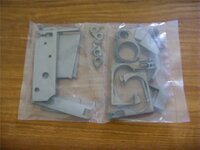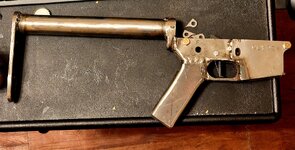I don't really recall reading anywhere in the rule that used 80% as a qualifer for what they constitute as "easily"... or any other clear definition of what "easily" actually means for that matter. Not that it doesn't. That's one friggin long document, but I simply don't recall seeing it.I'm saying that 80% is just a term of art for how the ATF determines what "easily" looks like...
Funny though... to me... a GG3 "0%" is what I would call "easiest" over an 80%. Buy it, set it, hit the button, walk away... come back later and bolt it together... you're good to go~!
An 80% is a much more time/skill intensive hands on job with a lot of intermittent and varied setup steps, varied tools... and a whole lot of mess.
By the "easily" standard, everything becomes subjective and difficult to define.
My own thought is they are leaving the maximum amount of wiggle room for current and future application and will likely apply more of an "intent" ruling. Meaning... if it's an item common sense would dictate is solely intended to be altered/milled/welded/manipulated/etc into a working firearm... it's gonna be classified as a "firearm" and be subject to serialization and BGC required. Or at least they are going to TRY to get away with that.
Last Edited:













